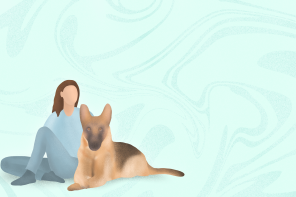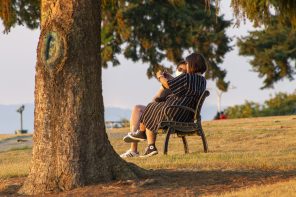When the world seemed to shut down in March, everything I had taken for granted suddenly disappeared. Normal life became not-so-normal. I, along with many others, craved the outside world. I longed to go to the movies with friends, enjoy a meal at a restaurant, and was even nostalgic for the arduous trek up to Stewart Bio. However, it was being out in nature that I unexpectedly missed the most. As the months progressed, this need to be outside without any restrictions weighed heavily on my mind. It was not just being able to inhale fresh air without wearing a mask that bothered me, but rather the fact that being connected to a wider world was no longer feasible. I became obsessed with reading travel articles and looking at old National Geographic photos. I lived vicariously through YouTube videos of farmers in rural China hiking the nearby mountains and foraging for mushrooms. The most transformative habit I took up was following along with 1990s public television painter Bob Ross, whose program became a form of therapy for me.
Although the first episode of Ross’s The Joy of Painting aired thirty-seven years ago, the show has recently become extremely popular. The Joy of Painting encapsulated everything I needed during this pandemic: a calm voice telling me that trees were happy and to embrace my mistakes as “happy accidents”, the soothing sounds of paint knives smearing colors across a canvas, and the occasional bird or squirrel that would make its way into the episode. Ross’s appreciation for nature made me see the beauty of the world that I had taken for granted pre-pandemic. The few times when I went outside to take walks, I employed Ross’s lessons and began to observe more carefully the colors, sounds, and smells around me. Never before had I been so attuned to leaves rustling in the breeze or the sky’s vibrant blue hue on a bright day. I, like many others, hated the monotony of everyday life under the pandemic. Following the same routine, every day became exhausting. I needed spontaneity in my life, and the intricacies of nature’s beauty always offered something exciting.
Painting and looking at landscapes for hours reminded me that, despite negative news popping up at every moment, beauty and vibrancy still existed.
The most impactful experience I had was attempting to paint along with Bob Ross for the first time. Going in, I was confident that it wouldn’t be too difficult. I set up my paints, brushes, and canvas paper. I even arranged the paint tubes in the order that the colors would appear in the video. But the moment when Ross flicked Prussian Blue across the top half of the canvas, I was already falling behind. How was this man able to work so quickly? Why are his paints blending in so seamlessly while my painting looks like a fake Rothko? How is he so calm while doing this? I was becoming confused and frustrated. I expected perfection and what I got was most definitely short of it. My mistakes were not happy little accidents but rather blaring catastrophes. Those happy little trees? I gave up on them.
While my first Bob Ross painting was a chaotic experience, over time, I learned to embrace what Bob Ross had been preaching in each episode: my work did not have to be a replica of his. After all, nature itself is imperfect and complex. That’s what makes it so interesting, and why I longed to be outdoors.
For a small part of my day, I had made the conscious choice to put down my phone and to appreciate nature’s tranquility and complexity—even if they were just scenes on a canvas.
Painting and looking at landscapes for hours reminded me that, despite negative news popping up at every moment, beauty and vibrancy still existed. While my pessimistic views on COVID and the future were not irrational, I realized that even changing my mindset for just a few minutes a day to focus on being more positive drastically improved my mental wellbeing. Painting along with Bob Ross let me escape into that worry-free world as I immersed myself into scenes like “Mystic Mountain” and “A Walk in the Woods.” None of these landscapes were real places, but that was the real draw, the ultimate escape. For a small part of my day, I had made the conscious choice to put down my phone and to appreciate nature’s tranquility and complexity—even if they were just scenes on a canvas.
Bob Ross’s calming presence is not just welcome during COVID. His optimistic outlook on life is something that everyone can learn from even when the pandemic is behind us. Not only is creating art an effective form of therapy, but his appreciation for nature and the wider world taught me that finding happiness can be attainable, even if it’s just for a little while.








